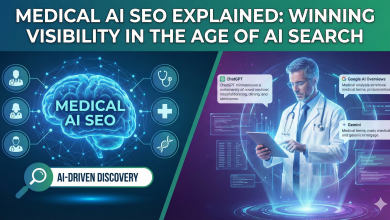
Most conversations about AI fixate on the interfaces we can see. But what’s more impressive lies beneath. As it’s the infrastructure that lets systems talk to one another—the APIs integrating data and workflows into a single, connected economy.
AI may be the visible layer of innovation, but the backbone is built on interoperability.
API adoption isn’t just a technical nicety; it’s a driver of the digital economy. For example, a 2025 study found that higher rates of this adoption in Saudi Arabia were positively correlated with the Digital Economy Index: economies that embraced APIs saw greater digital-commerce efficiency, innovation payoff and transaction volume.
So when we talk about a “connected economy,” we’re not talking about more automation or more data sharing. It’s an economy where data moves seamlessly, intelligence is composable, and value is co-created across domains.
The Rise of API-First Intelligence
Every AI system, no matter how advanced, is only as good as the systems feeding it. The best algorithms fail without the right inputs: structured, reliable, and interoperable data that can move easily between applications. Yet in most organizations, data remains locked in legacy silos, disconnected from the workflows where it could make the greatest impact.
That gap between ambition and infrastructure has defined the first wave of enterprise AI. And the early years of enterprise AI have felt, as Guillermo Delgado of Nisum puts it, “like a new Gold Rush in the American West—people think they can scoop up gold with a spoon, without realizing the depth of effort, knowledge, and endurance needed to truly master and absorb what AI and analytics can offer.”
The rush is real—but so is the risk. Gartner research reveals 63% of organizations either do not have or are unsure whether they have the right data-management practices to support AI. Plus, organizations lacking “AI-ready data” infrastructure are likely to abandon 60% of their AI projects by 2026.
API-first architectures address that gap by standardizing how systems communicate so that information flows in real time. Instead of forcing AI models to extract meaning from fragmented records, API-driven design ensures that data arrives clean, contextual, and ready for analysis.
Modern data orchestration platforms have become foundational. Solutions like Kleene.ai for instance, help companies to centralize and transform their fragmented data and systems into data pipelines that are ready to analyze. Kleene reduces the technical lift needed to make data available for AI. When clean and well-structured data is flowing, the leap from experimentation to operationalized intelligence becomes much more of a reality.
In practice, this shift can be seen across industries. Nisum, for example, helped a major retail client deploy a real-time order-fulfillment control system known as Shop Assist. The integration exposed live inventory and substitution workflows to both customers and in-store pickers, creating a feedback loop that improved satisfaction and operational accuracy. According to Nisum’s published data, the system generated $18.6 million in incremental annualized sales and an 88% positive interaction rate.
The same principles apply at a global level. Midi, which connects U.S. employers, Latin American contractors, and banks through a shared payments infrastructure, depends on API-first architecture to operate securely across multiple regulatory and currency systems. Each payment passes through multiple banking, currency, and regulatory systems in real time, turning interoperability into a requirement rather than a feature.
These examples show that API-first design is a strategic enabler of AI itself. By turning enterprise systems into open, composable frameworks, APIs allow data to move with purpose—creating the conditions for machine learning to learn continuously, not episodically. But the real breakthrough in AI begins with connectivity. For a deeper look at how unified APIs streamline integration workflows and reduce maintenance overhead, read Apideck’s article on the Top Benefits of Unified APIs.
The Power of Connection
In the connected economy, the advantage comes from the ability to integrate shared data responsibly and co-create value. Owning data once conferred power; now the power lies in connecting it.
APIs have become the new currency for growth. They turn isolated capabilities into platforms that others can build on, creating compounding value across ecosystems. In financial services for example, Jifiti’s white-label lending APIs allow banks to embed credit services directly into a retailer’s checkout experience, making financing feel native to the transaction rather than an external service.
Similarly, within the insurance sector, GetCovered automates coverage between property managers, landlords and renters, embedding risk management where it’s most relevant instead of forcing users to seek it out separately. The underlying insight is the same: APIs transform industries by monetizing connection.
In the cross-border payroll space, Midi demonstrates how connectivity can extend beyond efficiency to inclusion. The company was founded to solve a problem many Latin American professionals faced: access to U.S. jobs didn’t always mean access to U.S. banking. By building an API-first infrastructure that links U.S. employers, Latin American contractors, and regional banks, Midi allows workers to receive payments through local rails while maintaining access to U.S. financial services. The result is faster settlements, fairer exchange rates, and a pathway to financial independence for remote workers across the region.
In Latin America’s SME sector, Leadsales, a CRM for WhatsApp and SoMe, shows how APIs are closing long-standing technological gaps. As Meta’s first official partner for SMEs in the region, the company has integrated the WhatsApp Cloud API to give local businesses access to large-enterprise communication tools—without the cost or complexity that once kept them out of the market. Its new Coexistence feature lets SMEs use mass messaging and automation capabilities while retaining their verified WhatsApp Business numbers. This partnership is turning conversational commerce into an accessible growth engine rather than an exclusive advantage for global brands.
The companies best positioned for AI aren’t necessarily those with the biggest datasets, but those whose systems are designed to learn from—and transact within—other systems. The smarter the connections, the stronger the network.
Building Ethically Connected Systems
The more connected our systems become, the greater the need for trust, governance, and explainability. Every API connection creates value, but it also creates exposure. When data moves across borders and industries, questions of accountability, ethical use, and consent become clear.
As these networks grow more intertwined, transparency becomes the currency of trust. Earlier examples of interoperability show how cross-border networks can drive economic efficiency. But they also highlight why trust can’t be an afterthought.
As Marcelino Bellosta, Chairman of Midi, explains, “When you’re connecting banks, employers, and contractors across borders, transparency isn’t optional; you have to build data flows that are auditable, compliant, and visible to every participant. That’s the only way to maintain trust at a global scale.”
In finance and insurance, API frameworks are being designed to share only the minimum viable data required for a transaction, reducing exposure while preserving insight. In healthcare, privacy-preserving architectures such as tokenization and data anonymization are becoming standard practice, allowing algorithms to learn without compromising personal information.
These practices point toward ethical interoperability as a competitive advantage. The systems that thrive will be those engineered for visibility, not opacity, where every integration leaves a clear trail of consent, accountability and value creation.
For startups the imperative is clear: build for integration, not isolation. Treat open APIs and interoperability not as engineering features but as strategic business models. Collaborate across industries. Share infrastructure. Monetize the connections.
Article co-authored by Lily Blake




